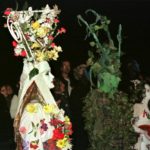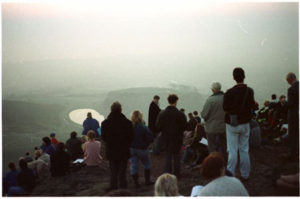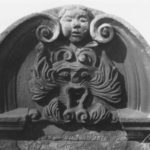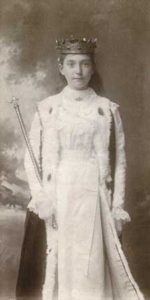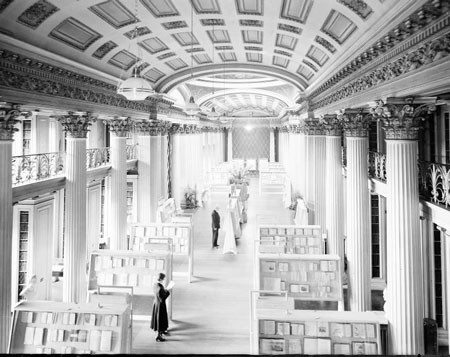May 15, 2017
by Scran
0 comments
Beltane draft
April 25, 2016 by Scran | 0 comments
The term Beltane is thought to mean bright fire. The festival’s origins lie in Scotland’s distant past when people lived by herding animals. They marked the seasons with community celebrations. Beltane signified the transition from Spring to Summer.
Before banks had holidays or even the advent of Christianity, there has been a festival held at the start of May to celebrate the first day of summer. Early agricultural peoples across Europe used seasonal indicators like the flowering hawthorn to mark the start of the summer in northern Europe. For the early farmers, summer was a time of warmth and plenty of food between the winter and before the hard harvest work, a great excuse for a party.
Paganism Plagiarism
When the first Christians arrived in Britain to spread their faith, they used many of the existing customs as a foundation. Major Christian festivals like Christmas and Easter fall near important dates on the solar calendar like winter solstice and spring equinox. By incorporating familiar holidays and symbols, Christian missionaries could encourage piety without asking their converts to stop their fun or completely change their society. Even today, services are held at the top of Arthur’s Seat as the sun comes up over Edinburgh on May 1st. Images of the pagan symbol of rebirth and renewal, like the Green Man who is particularly associated with Beltane, have been included in Christian gravestones for centuries.
Bring Back the Best Bits
This basic need for a holiday still holds true today. In our increasingly hectic world, people are becoming more curious about their ancient ancestors and customs. Revivals of pagan celebrations of the seasons are becoming popular, and sometimes spectacular events.
In Edinburgh, a contemporary Beltane Fire Festival is held on Calton Hill on the evening before 1st May to mark the beginning of summer. This variant of the Beltane festival was started in 1988 by enthusiasts, with academic support from the School of Scottish Studies at the University of Edinburgh. Since then it has become an immensely popular event in the city’s calendar, drawing on a variety of historical, mythological and literary influences including the Green Man and the May Queen.
Beltane celebrates fertility and the earth’s ripe abundance. Various rites were performed to ensure the fertility of nature and the fires were believed to purify and protect against plague and epidemics. Modern day Beltane festivals are mainly for public entertainment.
The Victorians
The Victorians also realised the value of a celebration for the whole community and began ‘reviving’ local customs in towns across Britain, like the Riding of Marches in Peebles to define the town’s boundaries. Here the Beltane originally celebrated the advent of the Summer Solstice in May and in folklore was a Celtic festival devoted to Baal, the God of Fire.
The modern celebration, marking midsummer, is primarily a children’s festival and incorporates the Riding of the Marches. In 1899, the first Beltane Queen was crowned with all due pomp and ceremony, moving the celebration to mid June. The Peebles Beltane Festival continues into the 21st century bringing tourism to the town.
John Muir – Conservation’s Father
April 21, 2016 by Scran | 0 comments
John Muir is possibly better known in North America, where he is recognised as the ‘father of the National Parks’ of the United States. He was the first person to call for practical action to cherish the world’s wild places. He became a founding father of the world conservation movement, and devoted his life to safeguarding the world’s landscapes for future generations. His birthday, April 21, is celebrated as ‘John Muir Day’ across the U.S.
Born in 1838 in Dunbar, he was the third of eight children of Daniel Muir, a ‘corn dealer’. In 1849, his father who had become a convert to a religious sect called the ‘Disciples of Christ’, made the decision to emigrate. The Muir family arrived at the time of the Gold Rush and set up home at Kingston in Columbia County, Wisconsin. Life was harsh, with land to be cleared for the planting of crops. In 1861, he enrolled in the University of Wisconsin and picked his way through subjects haphazardly. It was a fellow student, Milton Griswold who introduced him to Botany and, in doing so, shaped Muir’s future and that of the landscape of the United States.
To Canada & the Travels Begin
In 1863, Muir fled to Canada to escape being drafted into the American Civil War. From there his travels began, including in 1867 his famous ‘Thousand Mile Walk to the Gulf of Mexico’, the expedition that changed his life. With him, Muir, characteristically, took a New Testament and a copy of the poems of Robert Burns. From the Gulf, he moved on to Yosemite and viewed the Sierra Nevada mountain range and was committed to a life of exploration, writing and campaigning for conservation. His travels enjoyed none of the “luxuries” of modern day explorers. He travelled lightly in every day clothes and he did not carry a tent or a coat. In icy conditions, he simply hammered nails through his boots. It is unsurprising that he became a hero of the American West. He wrote and published, ‘My First Summer in the Sierra’ which propounded theories on the formation of the range in ‘New York Tribune’ articles and by 1871 was visited by the philosopher Ralph Waldo Emerson who was a lifelong influence on him.
The First National Park
Marriage in 1880, to Louie Strentzel, did not keep him at home. He travelled by ship to Alaska where he was adopted, with the name of ‘Great Ice Chief’ by a native American tribe. His interest in California also continued and, in 1889, he proposed the establishment of Yosemite Valley as a National Park. Congress ratified this and in 1890 the first National Park was created, followed quickly by the first forest reserves. In 1892 Muir was instrumental in setting up what was arguably, his most famous creation of all, the ‘Sierra Club’. Muir knew that attitudes rather than laws were most important in protecting Nature. In 1903, President Theodore Roosevelt camped with Muir in Yosemite and became an admirer and ally of the Scot. During Roosevelt’s term, National Forest land in the United States increased to almost 150 million acres. Included in this area were the Mariposa Grove of Sequoia trees and the Grand Canyon.
Lasting Testament
Muir died in 1914 from pneumonia, but the unified control which he believed necessary was achieved in 1916 when United States Congress passed a bill to create a National Parks Service, a model for this field throughout the world. The Sierra Club still exists as one of the major preservation organisations across the world. In Britain, the ‘John Muir Trust’ has, since its inception in 1983, adopted a policy of acquiring and managing wild land according to his ideals. In Dunbar, John Muir’s Birthplace has become a museum and the John Muir Country Park encompasses a variety of coastal habitats in East Lothian.
 In 2014 Scotland’s then First Minister, Alex Salmond, opened the coast to coast pathway in Muir’s hometown of Dunbar on 21 April. Crowds enjoyed celebratory art, music and performance. John Muir lookalikes provided entertainment and thought-provoking quotes from his writings. Walkers, runners and cyclists participated by carrying flags, designed by local children, along the route. This was the first leg of a relay, ‘A Flag For John Muir’. On 26 April, the flags reached the other end of the John Muir Way, in Helensburgh. This is where the 11 year old John Muir and his family set sail for their new life in America, 1849.
In 2014 Scotland’s then First Minister, Alex Salmond, opened the coast to coast pathway in Muir’s hometown of Dunbar on 21 April. Crowds enjoyed celebratory art, music and performance. John Muir lookalikes provided entertainment and thought-provoking quotes from his writings. Walkers, runners and cyclists participated by carrying flags, designed by local children, along the route. This was the first leg of a relay, ‘A Flag For John Muir’. On 26 April, the flags reached the other end of the John Muir Way, in Helensburgh. This is where the 11 year old John Muir and his family set sail for their new life in America, 1849.
Images © Hulton Getty, Abingdon Press, James Gardiner,
East Lothian Museums | Licensor Scran
April 15, 2016
by Scran
0 comments
Battle of Culloden
 The battle at Culloden was fought on the 16th April 1746 and was the last major battle to be fought on British soil. It is commonly believed to have been a battle between the Scottish and the English, but in reality Scottish and English fought on both sides.
The battle at Culloden was fought on the 16th April 1746 and was the last major battle to be fought on British soil. It is commonly believed to have been a battle between the Scottish and the English, but in reality Scottish and English fought on both sides.
Background
King James the VII of Scotland and II of England, a Stuart King, fled Britain for France in 1648. The Scottish and English Parliaments asked William of Orange to rule Britain. He accepted, which led to the Hanover family ruling Britain. James VII’s son tried to win the throne back and failed and his son Charles Edward Stuart or Bonnie Prince Charlie was determined that he would succeed where his father had failed. Living in France he stirred up French support and headed back to Scotland to rally the Stuart supporters. These supporters gave themselves a collective name ‘Jacobites’ from Jacobus, the Latin for James.
While the Stuarts were in France, the Scottish and English parliaments had joined. They ruled Britain closely with the King, George II, and were opposed to the Stuarts regaining the throne. Bonnie Prince Charlie found many supporters both in the Highlands and among English Catholics. But their numbers did not amount to the scale of the army that the Jacobites needed. The Jacobites fought several battles. Culloden proved to be the last.
The Night Before
The Duke of Northumberland commanded the Government troops. They arrived in Nairn on April 15th 1746, the Duke’s 25th Birthday. To celebrate the men were all given brandy. Bonnie Prince Charlie’s Jacobite army at Culloden decided to use an old trick and sneak up on the Government forces and attack at night. This would give them a huge advantage over the sleepy and hung-over Government men. This should have proved to be a winning move, but moving large amounts of men across dark, marshy moorland was problematic. Dawn was rising before the Jacobites had reached their enemies and, as the element of surprise would be lost in daylight, they turned back. On arrival back at Culloden the men were exhausted and hungry, but rest was not an option as enemy forces were already approaching.
The Battle
The Jacobite army was around 7,000 strong. It was outnumbered by the Government troops whose numbers were around 8,000. The Jacobites were already disadvantaged: not only were they exhausted and hungry but they lacked training and their weaponry was far inferior to the Government’s artillery. The battleground was marshy and uneven with thick grasses growing underfoot.
The armies faced each other and the Jacobites slowly advanced, waiting to be given the order to break into the infamous Highland Charge. Some of the Government troops separated and headed for the Jacobites’ right flank. While a small part of the Jacobite army broke off to protect its right flank the rest continued their advance towards the enemy. This strategy relied on the Jacobites advancing in line formation, but the uneven ground meant the flanks to the far right moved faster than the rest and lines were broken up.
The order for the Highland Charge to begin was given far too late. The right flankers were almost on top of the Government troops. The Jacobites didn’t stand a chance. Government troops simply fired into the massed Jacobites. Many were dead before they even charged. Others fled the battlefield and those who stayed to fight were easily cut-down. Around 1,500 Jacobites were killed that day. The Jacobites themselves only killed 50 of the Government’s men. The entire battle lasted less than an hour.
After the Battle
The defeat of the Jacobites was a bitter blow for Bonnie Prince Charlie. His supporters were willing to fight for him again and gathered to plan their next move. But the Prince ordered them to disperse. He went into hiding and fled to France. The Government wanted to punish anyone who had supported the Stuart claim to the throne. Many of the Jacobites were from Highland Clans. The Government stripped clan chiefs of their power, weapons were taken from their owners and the kilt and tartan were banned.
Culloden Today
 Today there is a visitor centre at Culloden Moor. Visitors can learn about the Jacobite cause, the battle and the people and weapons involved. There is also an immersive, film projected onto four walls, which creates an illusion for visitors that they are actually on the battlefield during the action of the battle. The battlefield itself is maintained and protected and visitors can walk around it with an interactive guide.
Today there is a visitor centre at Culloden Moor. Visitors can learn about the Jacobite cause, the battle and the people and weapons involved. There is also an immersive, film projected onto four walls, which creates an illusion for visitors that they are actually on the battlefield during the action of the battle. The battlefield itself is maintained and protected and visitors can walk around it with an interactive guide.
More on Scran
Image © National Trust for Scotland, National Galleries of Scotland & Historic Environment Scotland | Licensor Scran
366 Days of Architecture
April 4, 2016 by Scran | 0 comments
What do Elvis Presley, Toad of Toad Hall, Dennis the Menace, the residents of Ramsay Street, World Maths Day, coming-of-age film ‘The Breakfast Club’, and Scottish architects William Playfair, Basil Spence and Archibald Simpson have in common?
They all feature in the entries of ‘366 Days of Architecture’, a project that every day comes up with an image in the national record, Canmore, that relates to a fact specific to that day. It’s one of Historic Environment Scotland’s contributions to the 2016 Festival of Architecture, for the Scottish Government’s Year of Architecture, Innovation and Design. And it’s happening every day this year.
The image of the day can tie in with any associated event and demonstrates that diversity of digitised images in Canmore. The whole year has already been pretty much mapped out and related events include anniversaries, birthdays, sporting competitions, the signs of the zodiac and saints’ days. The big names in Scottish architecture all feature in the project, along with links to their entries in the Dictionary of Scottish Architects. Similarly, images connected to non-architectural historic events, current sporting championships and popular culture also crop up throughout the calendar. Social media is very much at the heart of ‘366 Days of Architecture’ and staff from the Communications team and Architecture and Industry section of the HES Survey and Recording group have been working together to deliver the project. The daily image is tweeted on the twitter feed @rcahms, with a link to Canmore.
Neil Gregory, Operational Manager for Architecture and Industry, and curator of January and March’s entries to date said: ‘The great thing about Canmore is that it features buildings that connect with anybody and everybody. Architecture has a place in everyone’s lives and buildings form a backdrop to every tangible cultural event. We hope that 366 Days of Architecture will bring new audiences to Canmore, entertain our current users and the wider public who enjoy using Twitter’
He added: ‘The great thing about the project is that there are always bags of images, film clips and sound snippets in Scran so we’ve had great fun finding complementary material on the Scran website. An event like the 1972 Eurovision Song Contest that took place at the Usher Hall in Edinburgh gives us a chance to showcase 1910 designs for the building that were never realised on Canmore and pictures of the contest happening that are held within Scran’
Clare Sorensen, Architecture and Industry Projects Manager, and curator of February and April’s entries to date added: ‘The project is a real showcase for the historic collections that we care for here at HES as well as the sheer variety of buildings that we have recorded as part of our survey projects. We’ve so far featured buildings recorded in the early 20th century in RCAHMS’ infancy as well as sites that we’ve investigated in the last few months as part of the new organisation’
‘366 Days of Architecture’ can be accessed via the daily tweet from @rcahms or directly from the front page of Canmore. To find out more about what’s happening in the Festival of Architecture, including other HES contributions, check out https://www.foa2016.com/
Images © Scottish Exhibitions Study Group, Crown Copyright: Historic Environment Scotland, The Scotsman | Licensor Scran
A Day Trip to Dunoon
March 21, 2016 by Scran | 0 comments
Scran paid a visit to Dunoon & it was a grand day out!
The purpsose of our visit was to meet the team of volunteers working with Dunoon Burgh Hall Trust as part of their Pop Up Programme. The Trust is in the midst of an exciting project to reclaim what is one of the town’s most important civic buildings. The 1873 Hall, listed on the Buildings at Risk Register for Scotland, is currently undergoing a major refurbishment and restoration programme. If you are curious to see the before pictures, there are 99 images available via Historic Environment Scotland on Canmore.
Meanwhile the volunteers are not letting the dust settle – they are investigating local heritage and all things relating to the history of this seaside town & the wider Dunoon community. During our visit we were able to show everyone how to access Scran, free of charge using their Argyll & Bute library cards. Together we looked at and discussed a host of collections material, including the day the Waverley ran aground – seen below in 1977. Some of the volunteers remembered it clearly & memories were exchanged. There were other reminiscences too, relating to more controversial events in 1984 when different peace demonstrations took place in Dunoon.
Of course the relationship between Dunoon Burgh Hall Trust & Scran pre-dates this visit. The Trust previously contributed film footage from Holy Loch Heritage – the American Presence a project which aimed to bring to life the 30 year period when the American Naval Base was sited at nearby Holy Loch. We are delighted to say our partnership is set to extend into 2016, when we look forward to sharing more Dunoon ephemera surfacing from the restoration works. To see what’s been lurking under their floorboards, watch this space.
Images © Argyll & Bute Library Information Service, Historic Environment Scotland, The Scotsman, Dunoon Burgh Hall Trust | Licensor Scran
Getting into Scran
March 18, 2016 by Scran | 0 comments
Did you know that most of Scotland’s local authority library services offer free access to Scran for their card holders?
And many of these offer access to Scran not just in branch, but as an online resource available from home. Check if you have free access here.
Image – Book exhibition in Signet Library, 1956 © The Scotsman Publications Ltd . Licensor www.scran.ac.uk
Saint Patrick’s Day
March 16, 2016 by Scran | 0 comments
Saint Patrick is the patron saint credited with bringing Christianity to Ireland. People all over the world commemorate him on 17th March.
Who was St Patrick?
Patrick (c. AD 387–461) is believed to have come from a wealthy family in Roman Britain who had already converted to Christianity. It is thought that his father and grandfather were prominent Church members. Patrick was kidnapped and taken into slavery, possibly to the west coast of Ireland, when he was sixteen. He remained in Ireland until he was twenty two when God told him in a dream to leave Ireland and go home. Patrick escaped and boarded a ship back to the mainland and joined the Church, studying to be a priest.
By around 432 he was a bishop and was called back to Ireland by God to bring Christianity to the Irish people. He is said to have explained the Trinity (Father, Son and Holy Spirit) to people using a three-leafed shamrock or white clover. This plant and the colour green has been associated with him and Ireland ever since. Legend has it that the reason why there are no snakes in Ireland today is because St Patrick drove them all away, believing them to represent evil. Patrick remained in Ireland for the rest of his life and is believed to have died on 17th March 461.
Celebrating St Patrick’s Day
St Patrick’s Day is a public holiday in the Republic of Ireland, Northern Ireland and in other parts of the world where people of Irish descent are prominent. It has also become a celebration of Irish culture as well as a day of religious observance and activities include taking part in parades, holding parties, wearing shamrocks, dressing in green and general socialising.
Formerly a day of religious observance and quiet celebration in Ireland, St Patrick’s Day has become more of a carnival. The first recorded St Patrick’s Day parade was held in New York, 1762 when Irish soldiers marched through the city and Irish immigrant communities in America also began celebrating their heritage in this way. These customs have spread all over the world, wherever Irish people have settled.
Images © National Museums Scotland & Hulton Getty | Licensor Scran
IWD – International Women’s Day
March 8, 2016 by Scran | 0 comments
International Women’s Day (IWD) emerged at the turn of the twentieth century in Europe and North America. It originated in labour movements and was initially linked to the causes of women workers and suffragists. Since 1913 it has been celebrated annually in various countries on the 8th of March. It has become a day for raising worldwide awareness of the need for women’s equality in the workplace, in education, politics and in the social sphere.
History of IWD
What is now referred to as International Women’s Day started off as the National Women’s Day in 1908 in the US. 15,000 female garment workers marched through New York on strike, demanding better working conditions and the right to vote. In the following year, the US Socialist Party established the women’s day as an annual national celebration.
At the Socialist International meeting in Copenhagen in 1910, over 100 women from 17 countries attended. They agreed to establish Women’s Day as an occasion for speaking out against social, political and economic discrimination towards women.
World War One
In Russia, IWD has been held on every last Sunday in February since 1913. On IWD, in the war-ridden year of 1917, Russian women started a mass-demonstration for ‘Bread and Peace’. After four days the Czar abdicated and Russian women were given the right to vote. In the Gregorian calendar this Sunday fell on the 8th of March. It has been the date for the IWD in the rest of Europe ever since, although initially it was mainly celebrated in communist countries. Even though conditions were harsh and most female employees were paid less than their male counterparts, World War I provided an employment opportunity for women on a large societal scale. Most men were away fighting in the war so industries were reliant on the female workforce. Since women needed to make ends meet in the absence of their men, they worked, developed vocational skills and learned to handle financial matters independently.
Education
Even though women from privileged backgrounds had limited access to university education in Britain from the 1870s onwards, it was several decades until it became more common for women to attend universities and also to be taught science subjects at school. The University of Edinburgh was the first university nationwide to admit women to study medicine (12 November 1862). Yet female students were initially not allowed to graduate and faced much opposition and discriminating regulations. This meant women could not work as professional doctors, with some remarkable exceptions, until decades later.
Notable Exceptions
Cambridge University established two colleges for women in 1869 (Girton College) and 1872 (Newnham College). However, it took until 1947 for women to be accepted as full members of Cambridge university. The first university to admit female students on the same terms as male students was the University College of London in 1878. In the 1960s and 1970s, the second wave feminist movement in the UK addressed issues of gender inequality with a special focus on education. The Sex Discrimination Act of 1975 rendered unlawful the unfavourable treatment of women (or men) based on sex or marriage, at the workplace, in education or training. It had the function “of working towards the elimination of such discrimination and promoting equality of opportunity between men and women”.
Suffrage
Since the 1890s the suffrage movement in Britain had stood up for women’s right to vote. Following the movement’s activities, the Representation of the People Act in 1918 granted electoral rights to women of property, aged 30 years or older. (The Act also meant that men of any social standing were now in a position to vote.) In addition women were officially allowed to stand for parliament. Nancy Astor was the first woman to take her seat in the House of Commons in 1919. Only in 1958, following the Life Peerages Act of that year, were the first women appointed to the House of Lords. In 1928, under the Equal Franchise Act, the right to vote was extended to women of any social standing, aged 21 years and older. Men and women in Britain had finally gained equal electoral rights.
Employment
With increasing opportunities for vocational training and university learning in the 20th century, women have gained wider access to a range of occupations. (eg film director Jill Craigie.) The issue of equal pay for men and women has been addressed by equal rights campaigners since the 1940s (eg politician Jennie Lee) and increasingly so from the 1960s onwards.
Creating opportunities for women to enter a wider range of occupations as well as high level positions in the professional world is still an ongoing topic. To an extent, the objectives of women’s rights campaigners are somewhat in accord with those of the growing gender equality and Lesbian, Gay, Transgender and Bisexual (LGBT) movement. (See also Discrimination – Sexuality.)
International Sport
In the world of international sport, such as the Olympics or Commonwealth Games, women (unlike men) were initially allowed to only participate in a limited number of sport contests. It was not until 1976 that the range of sports offered to women in the Olympics began to increase significantly. Images of female athletes and professional sportswomen then began to become more frequent in the media.
IWD more recently
In the 1970s the United Nations began organising global IWD events to raise awareness of gender inequality issues. Since then, International Women’s Day has become a more widely-known event to promote female rights in many countries. Governments and women’s organisations worldwide, in the developing and the developed world, now use the day to run training, information and celebratory events.
In Afghanistan, Belarus, Cuba, Georgia, Mongolia, Russia, Uganda, the Ukraine, Zambia, and several other countries, IWD is celebrated as a public holiday.
Images © Glasgow Caledonian University Library, Falkirk Museums, Hulton Getty, The City of Edinburgh Council | Licensor Scran
Free Copyright Masterclass, Glasgow 9th March
March 1, 2016 by User deactivated | 0 comments
 Copyright and its implications can be a daunting subject. If you work in FE, and would like to find out more about how to use copyrighted materials legally and safely, our friends at the Copyright Licensing Agency are running a Masterclass in Glasgow on Wednesday March 9th at the Scottish Youth Theatre on Brunswick Street. Scran will be speaking at the event, alongside speakers from the Association for Learning Technology, Educational Recording Agency and more. The event is free, runs from 11.30am to 4pm, and lunch is provided. For more info and to sign up, visit http://fe.cla.co.uk/copyright-masterclass/
Copyright and its implications can be a daunting subject. If you work in FE, and would like to find out more about how to use copyrighted materials legally and safely, our friends at the Copyright Licensing Agency are running a Masterclass in Glasgow on Wednesday March 9th at the Scottish Youth Theatre on Brunswick Street. Scran will be speaking at the event, alongside speakers from the Association for Learning Technology, Educational Recording Agency and more. The event is free, runs from 11.30am to 4pm, and lunch is provided. For more info and to sign up, visit http://fe.cla.co.uk/copyright-masterclass/
Image © CLA


